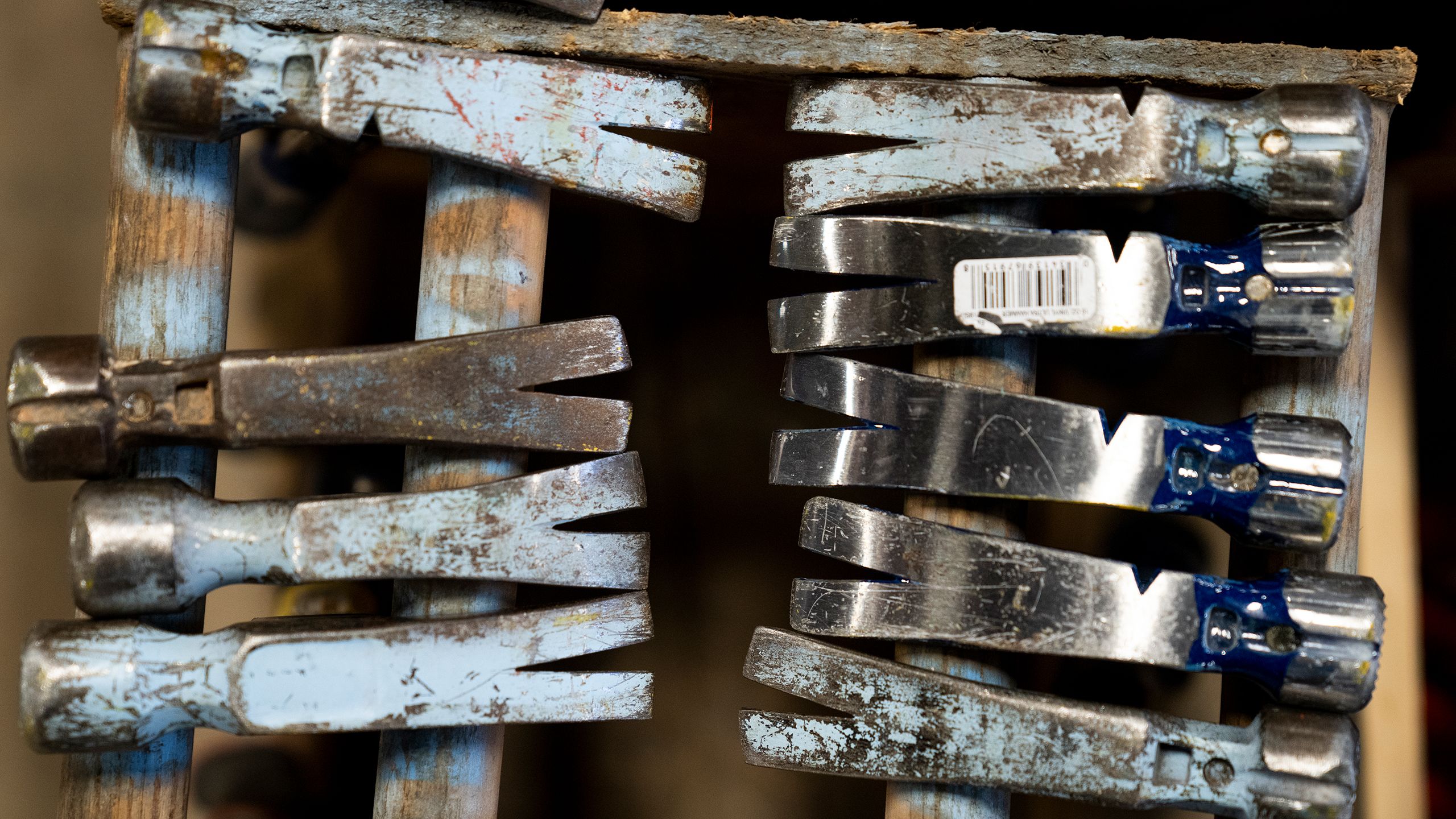Build. Advocate.
Empower.
Annual Report FY2019
July 1, 2018 – June 30, 2019
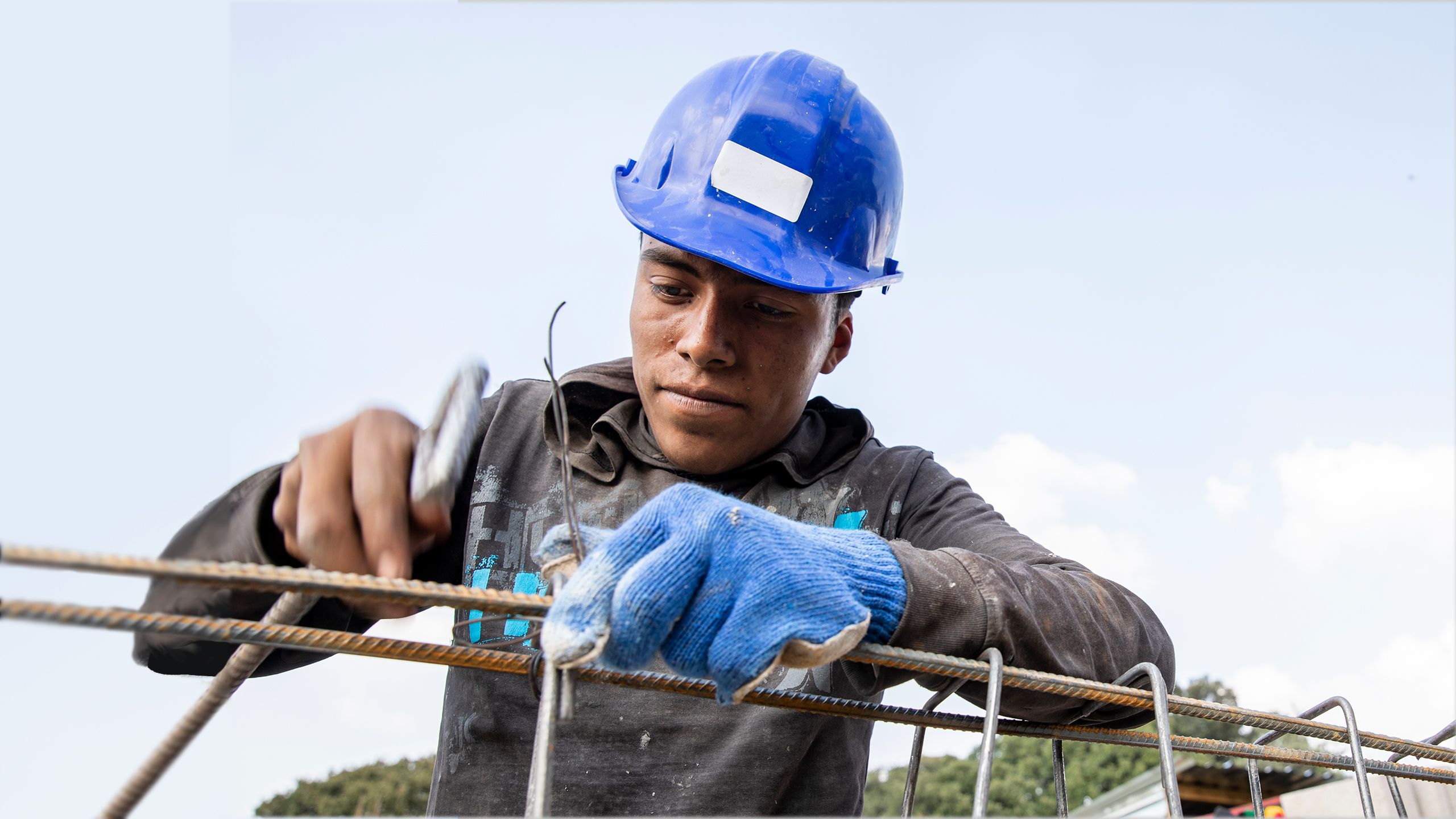
Together with homeowners and volunteers across the world, Habitat works to build, advocate and empower.
Together with homeowners and volunteers across the world, Habitat works to build, advocate and empower.
Elevate
“I keep on looking at how our house, how it was rising to the sky, thanks to people of goodwill who wanted to help us. I have never encountered this way of helping. I like it. It sets a good example for my family and a good example for the community.
A human being helping another human being can accomplish great things.”
Miroslaw, Habitat Poland homeowner
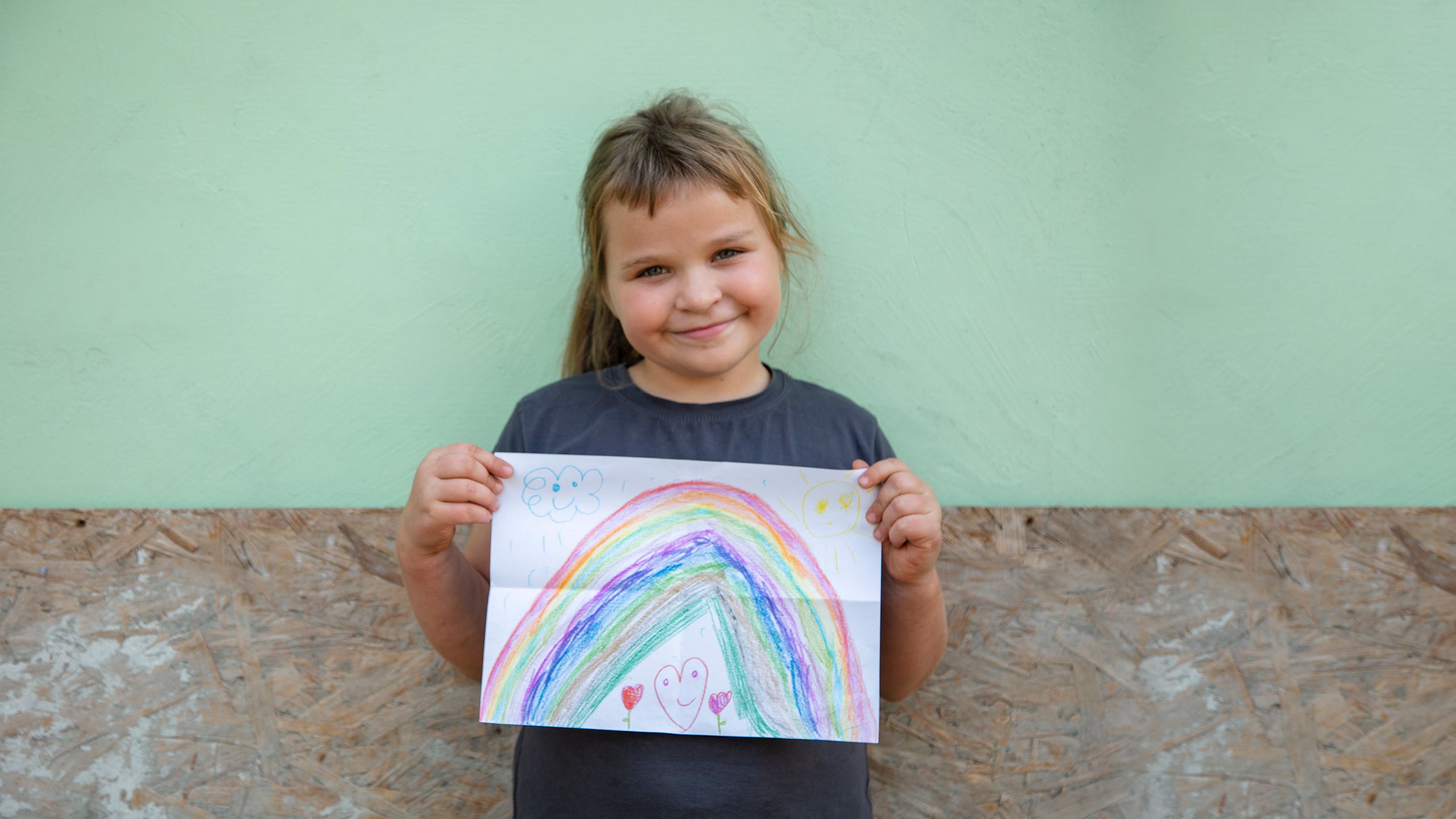
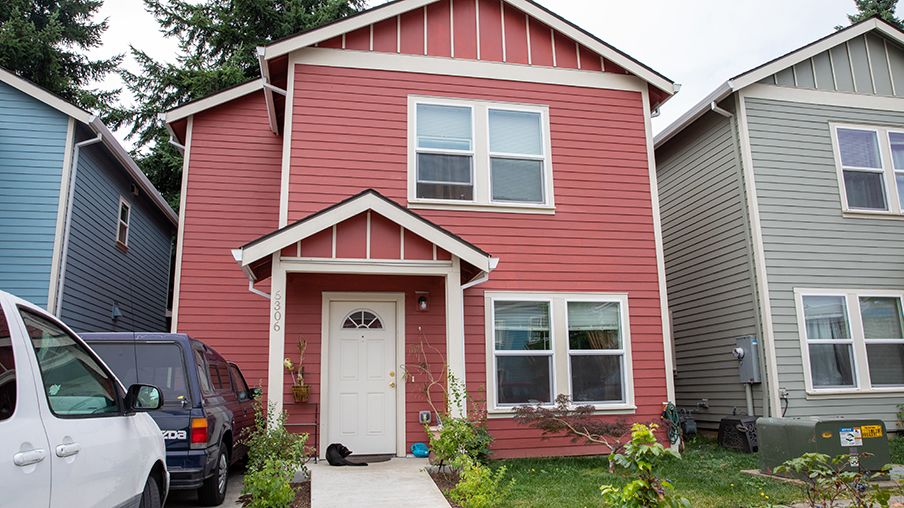
“I love this home. It opened up a lot of avenues for me and my family.
“I have a savings account now, which I never had before, because the house is affordable. All the bills are affordable now. The way the house is built and the soundness of it and all the things that were put into building this house — my light bill, my water bill, everything is nothing compared to what it used to be.
“We’re able to do more together, spend more time as a family. I don’t have to work all the overtime hours that I used to have to work just in order to make it. I’m able to work just regular shifts now, and we’re fine. So that just took the stress way down. I feel ecstatic with my life now. It feels a lot calmer, a lot more at peace.
“Before, when we lived in the other house, I would literally see the kids when I’d send them to school in the morning, and then I didn’t see them until the next day when I sent them to school in the morning because I was always at work. I make dinners now and spend family time, play games at night or watch movies at night together and stuff, so all the things that we weren’t able to do before. I’m here.
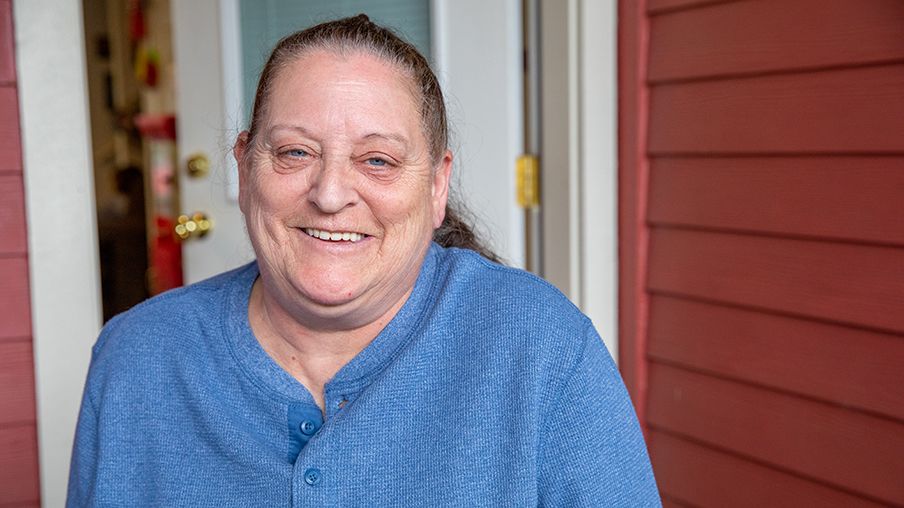
“I sleep good at night. I just have peace of mind. We have a more relaxed atmosphere. You can see it in the kids.
“There’s hope that I’ll be able to help the kids get into colleges or buy their first cars, things that never would have been possible before Habitat.
“When Habitat called, I started crying. I was excited because I was approved, and I felt accomplished. My brain just went instantly to, ‘Your life just changed.’”
— Lorrie, Habitat Portland/Metro East homeowner


Transform
“After building our house, my hope for life changed. I can see my boys sleeping soundly. Their sound sleep not only makes them healthy and happy, but it allows them to have better dreams. My heart cries with joy because I know my kids are dreaming about a better future.
When you dream, it becomes a reality, and safe shelter creates the dream and hope.”
Bir Ram, Habitat Nepal homeowner
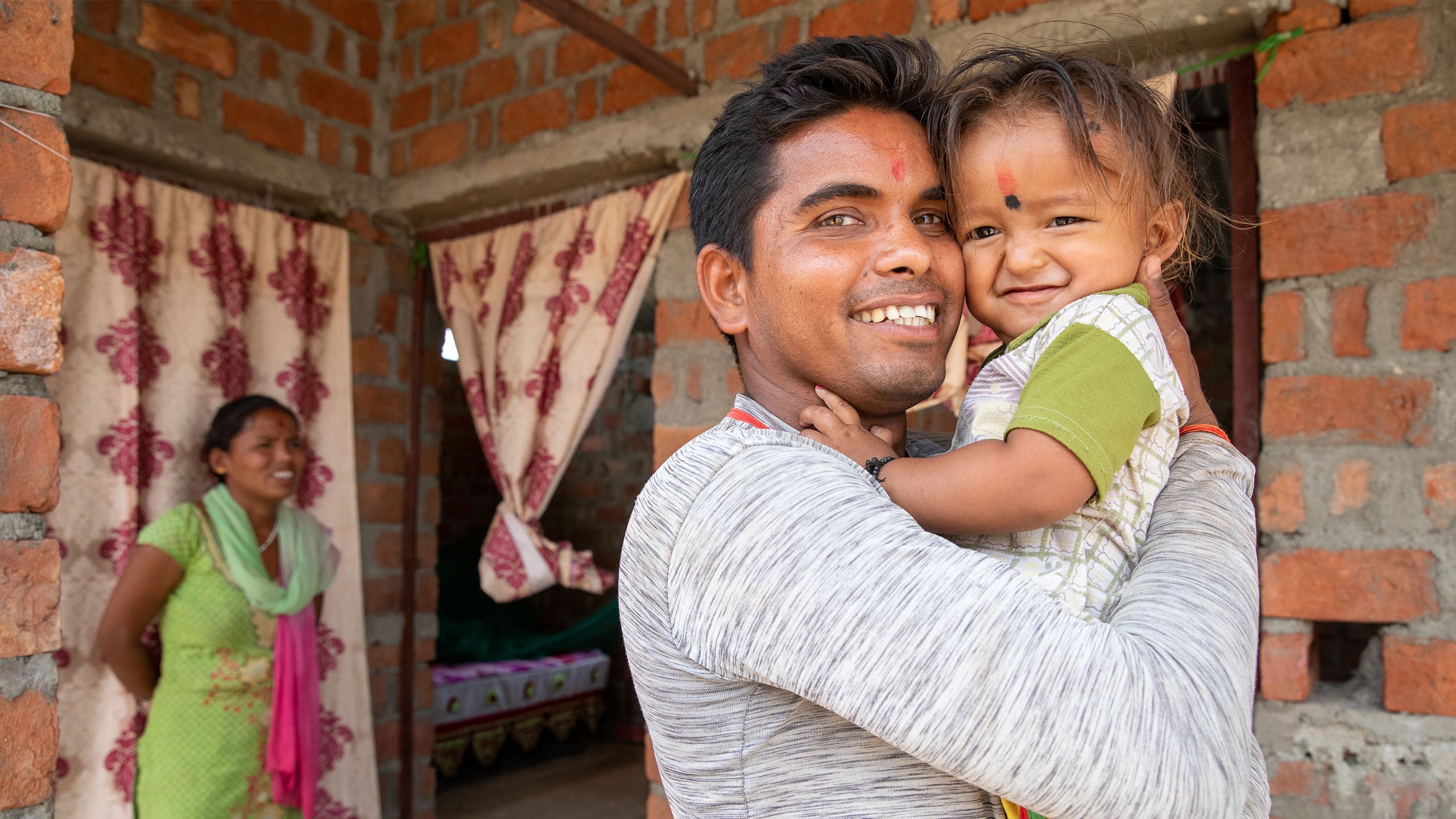
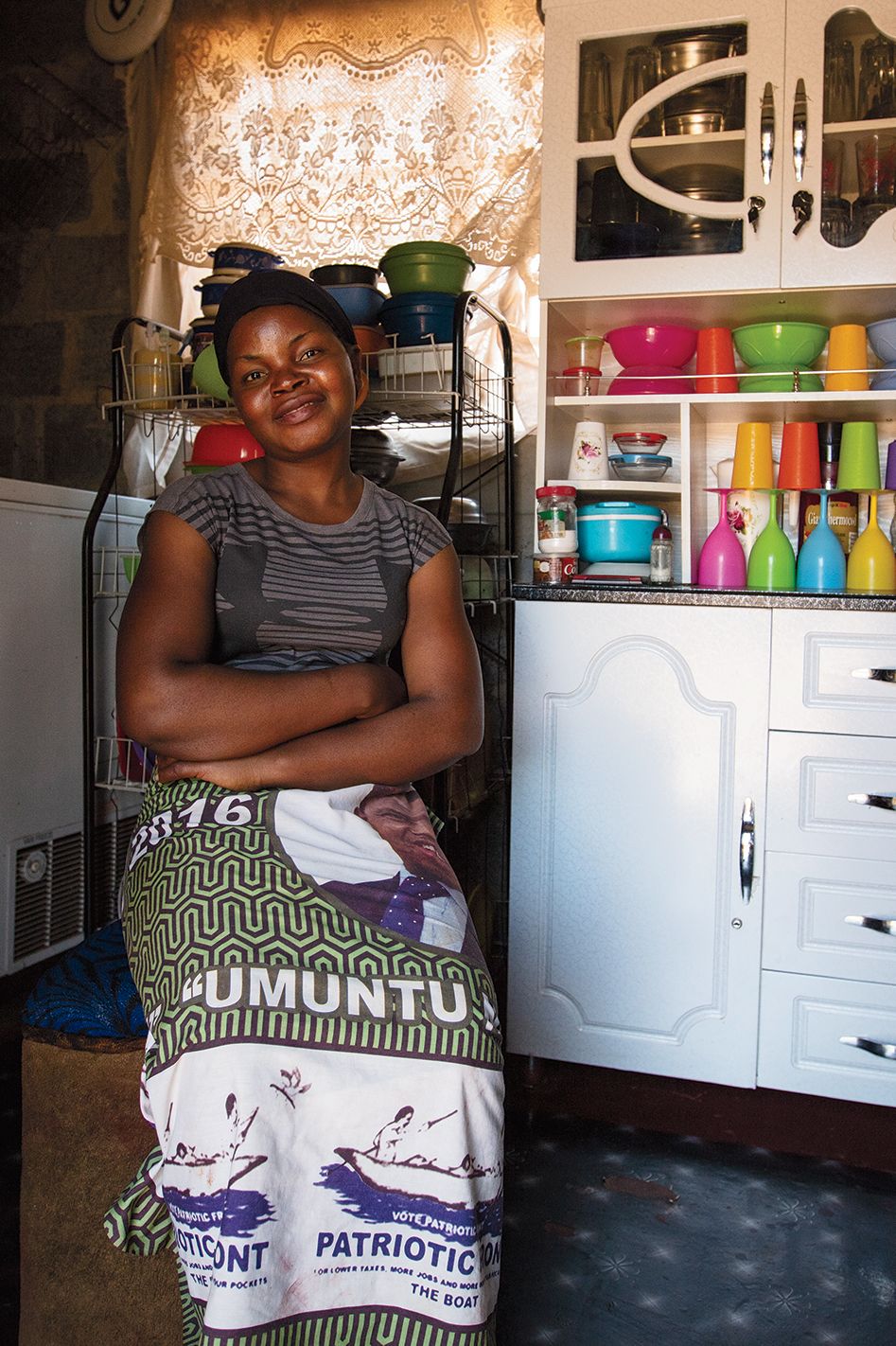
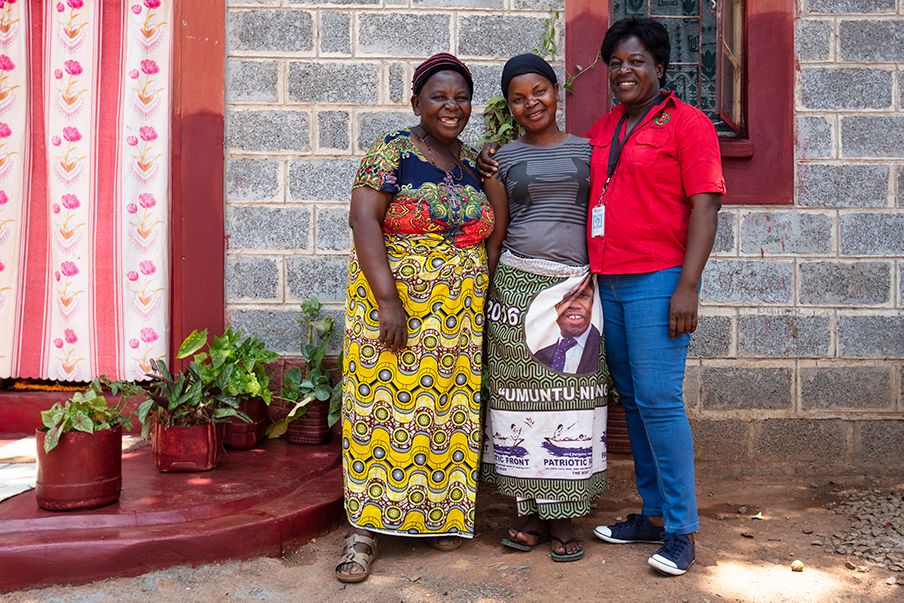
At Lucy’s house in Zambia, plants flourish on the front porch. The inside is decorated with happy, colorful dishes and white lace curtains from the local market where Lucy sells bread, milk and ice blocks. “I love this house,” she beams. “It has cushioned us from hardship.”
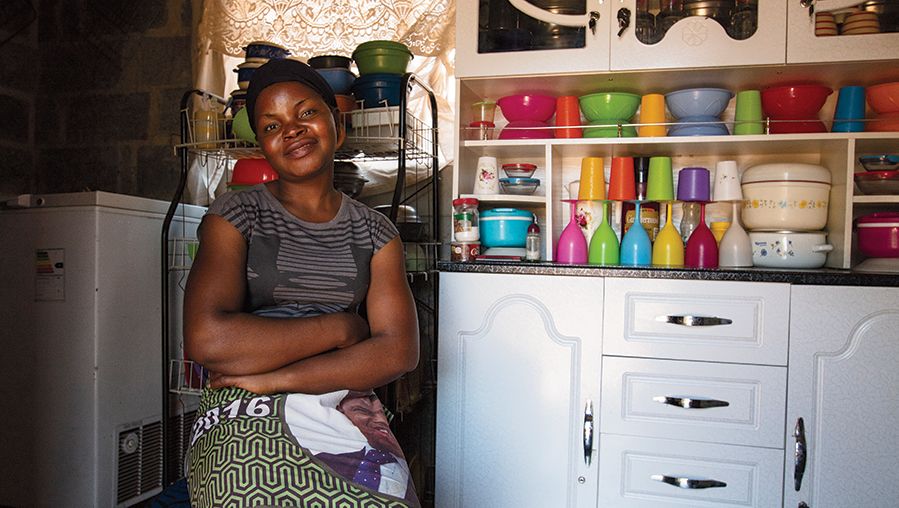
Lucy’s mother died nine years ago; her dad had died a year earlier. Lucy, only in the seventh grade at the time, quit school to raise her brothers, Bornface and Gift, then 9 and 7. The trio got by as best they could until their mud-brick house collapsed.
Lucy and her brothers were not injured, but they found themselves moving from relative to relative in pursuit of shelter. Eventually they returned to their house but were essentially homeless as they tried to rebuild, mud brick by mud brick, whenever funds would allow.
In Zambia, Habitat works with vulnerable groups such as the elderly, people with disabilities, orphans and child-headed households. Habitat Global Village student volunteers from the Republic of Ireland helped build Lucy’s house out of durable and dependable cement block. “After Habitat came and said they were going to help us, I leaped with joy,” Lucy says. Taking care and loving the house is her way of showing her gratitude, she says.

Today, Lucy’s brothers are in school. Bornface wants to be a pastor; Gift, a doctor. Lucy has career plans, too.
“I would love to see my business grow.”
Although the house is new, Lucy still feels her mother’s presence. Her mother would be proud of how well all of her children are doing, she says. “The way we are living, and how beautiful this place has become, she would be very happy.”
Stabilize
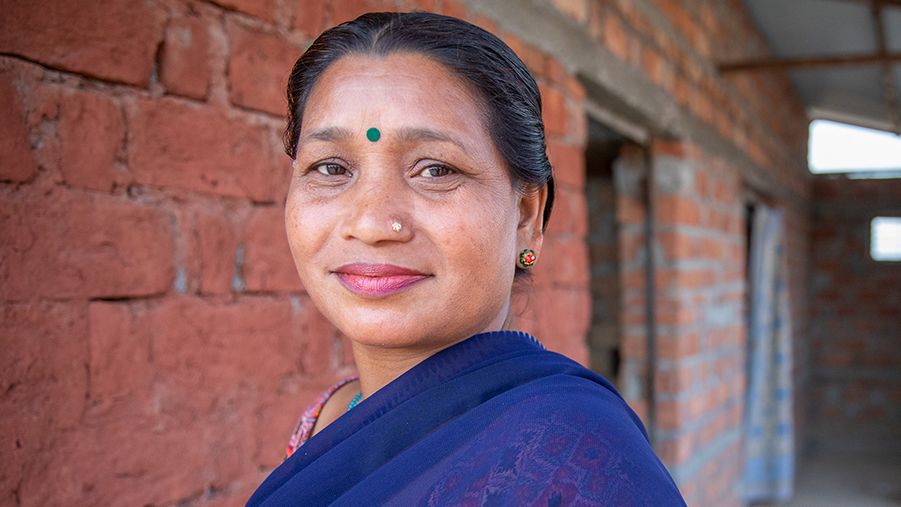
Saraswati’s family were Haliya, bonded agricultural laborers in Nepal who eked out a living while paying off debt obligations to wealthy landowners, sometimes for generations. In 2008, the government granted the laborers their freedom. The families, however, had no resources to purchase land or a home and so lived in primitive huts.
With an initial investment of US$89,000 from local Habitat affiliates in the United States, Habitat Nepal is leveraging government funds of more than US$525,000, helping these families secure land tenure and building 165 new homes in the Kanchanpur district of western Nepal.
Hear Habitat Nepal homeowners describe how their lives have changed after securing land tenure.
“Life was so difficult,” Saraswati says. “There was no peace in my mind and in my heart. We were freed, but it was a real problem to live a normal life. I did not know how.”
All of that has changed. The first in her family to ever hold a land title, today Saraswati knits clothes and sells them at market. It’s a skill she loves and wants to teach to others. “In this community, there is love and support,” she says. “I will be happy here; everyone loves me, and I love them.”
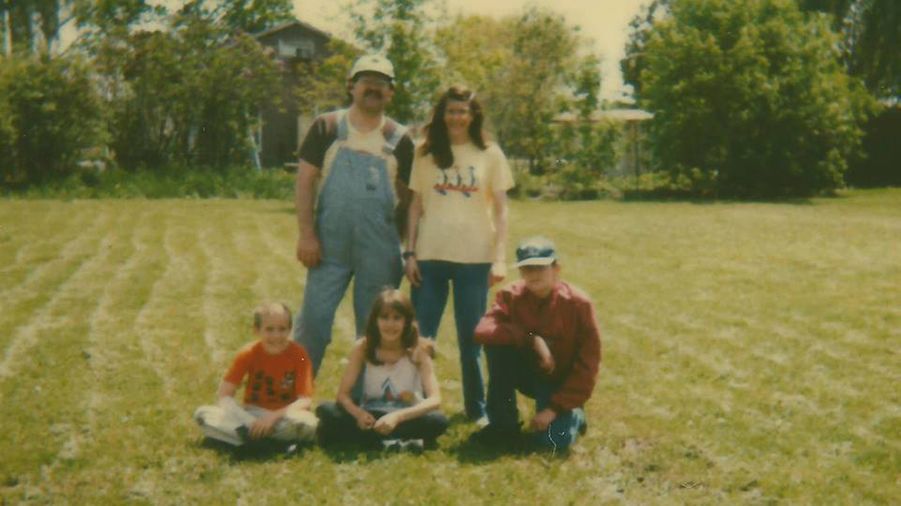
When Ben thinks back to his childhood in central Michigan, one thing stands out: the ever-present boxes in the closet.
“I always had boxes with my toys and belongings in them — always ready to be picked up and moved to the next place.”
Now a state representative, Ben recalls the strain of constantly moving between rental units in varying levels of disrepair. “You get the tunnel vision of ‘Are we going to make rent? How are things looking for food? How are things looking for utilities? What’s the job situation?’” he says. “So you don’t dream a lot. You don’t think about what your five-year plan is. It’s a very closed and short-term vision because it’s about necessity.”
It wasn’t until his parents became owners of their own Habitat home that his family finally found the freedom to dream, to plan — and to think outside of the moving boxes.
“Suddenly, Habitat took away one of the many key stress points of poverty. Housing was no longer a constant point of concern or instability. My parents could start thinking ‘What is our five-year plan? And how can we do more with experiences to nourish this life?’”
A career in public service, Ben says, is his way of helping to ensure that everyone is afforded the support to grow, succeed and contribute to society the way his family has.
“One of my most powerful memories is from right after we moved into our Habitat house,” Ben says. “I went out to the curb, and we threw the boxes away.”


Rebuild
“My roof leaked a lot during the hurricane. I went to Habitat because I heard that they can help you. And they helped me put a new roof on my house. Do you know what that means to me?
When I think about Habitat, this song ‘What Would I Do Without You?’ comes to my head. What would I do without Habitat?”
Collette, whose Texas house sustained damage during Hurricane Harvey and was repaired by Habitat
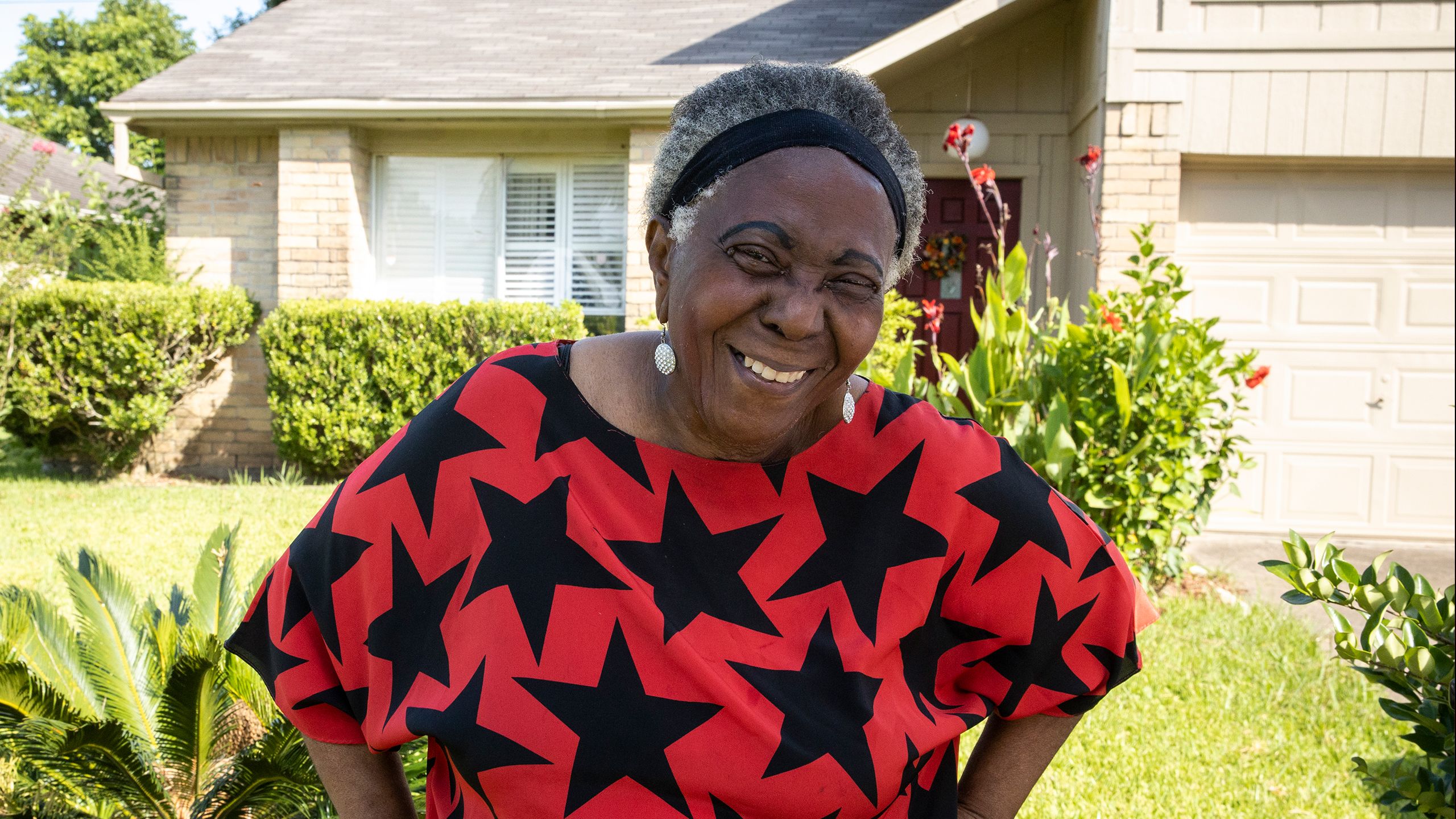
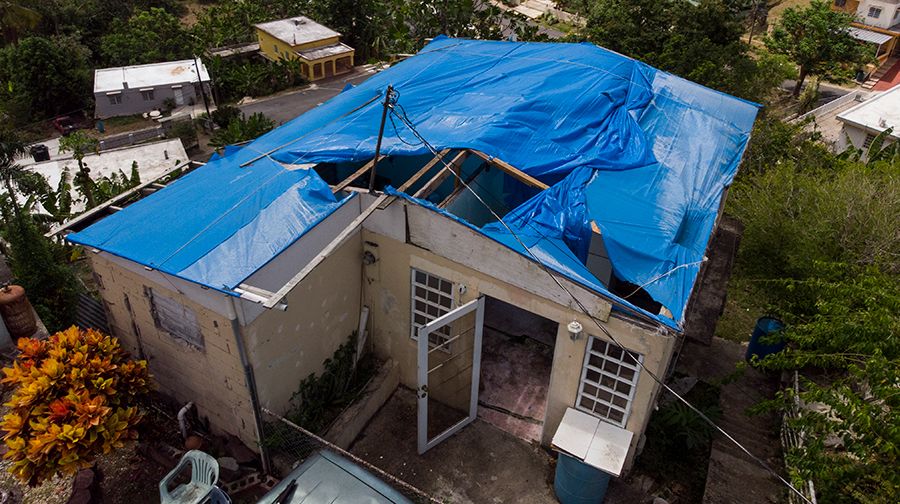
In Puerto Rico, Habitat is partnering with families like Juan Antonio’s to make much-needed repairs to their homes.
In Puerto Rico, Habitat is partnering with families like Juan Antonio’s to make much-needed repairs to their homes.
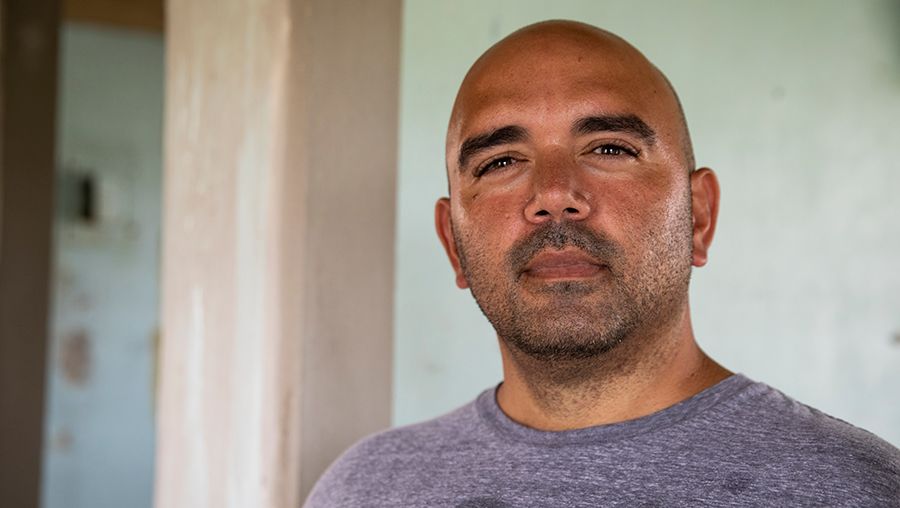

In September 2017, back-to-back hurricanes Irma and Maria devastated Puerto Rico, wiping out infrastructure, livelihoods and homes. Two years later — through a multiyear, multifaceted approach involving private, public and nonprofit partners and thanks to the generous support of AbbVie — Habitat continues to make progress in communities throughout Puerto Rico and advocate for changes that will build resilience and reduce delays in recovery when disaster strikes again.
Hear about the scope of work and progress made in Puerto Rico communities affected by Hurricane Maria.
For Juan Antonio, partnering with Habitat has meant finally replacing the blue tarps that have covered his home for the last two years. His new hurricane-hardened roof includes extra reinforcements to make him and his home more resilient against future disasters. He wasn’t sure that his residence of 23 years would ever be habitable again, let alone rebuilt better and stronger than before. “It’s like when you’re in the dark, and you start to see a little bit of light,” Juan Antonio says of Habitat’s help. “Over time, that light gets bigger — with hope and with happiness.”
In addition to directly partnering with families like Juan Antonio’s to improve their shelter, Habitat focuses on improving the skills of construction workers on the island and investing in the recruitment and training of new laborers, with a special focus on women. We also are partnering to address land titling issues; working at the household level to help families legalize their title status; at the community level with local organizations dedicated to solving Puerto Rico’s tenure issues; and at the national level as a member of a policy working group founded with partners Center for New Economy, University of Puerto Rico Law School and ReImagina PR. Habitat has served as a bridge and amplifying voice for organizations, institutions, municipalities, the government of Puerto Rico and disaster survivors working together to speed up and improve the quality of Puerto Rico’s recovery.
“I looked for help in so many different places. Thanks to Habitat, I can come home again.”
“This house just makes my heart glow!”
5-year-old Samantha, who now lives in a Habitat home after her family’s Florida rental was badly damaged during Hurricane Irma

Invest
Expanding on our tremendous success of helping 4.8 million individuals worldwide in fiscal year 2018, Habitat’s Terwilliger Center for Innovation in Shelter experienced another exciting year of growth, as we continued to transform housing markets to be more responsive to low-income homebuilders.
In FY2019, we had several successes, including:
Understanding how social norms determine construction decisions
The past year proved critical in understanding the subtle but powerful role of social norms in shaping the construction decisions of low-income households. Our Beyond Building: How Social Norms Shape Low-Income Home Construction report reveals that some households incorrectly believe the way materials look is proportional to construction quality and that customers and masons are risk-averse and reluctant to try new technologies and materials.
Similarly, our Bahay, Buhay report revealed that most survey respondents in Cebu, Philippines, were unfamiliar with safe building practices for disaster resilience and most homes are unlikely to withstand a natural disaster.
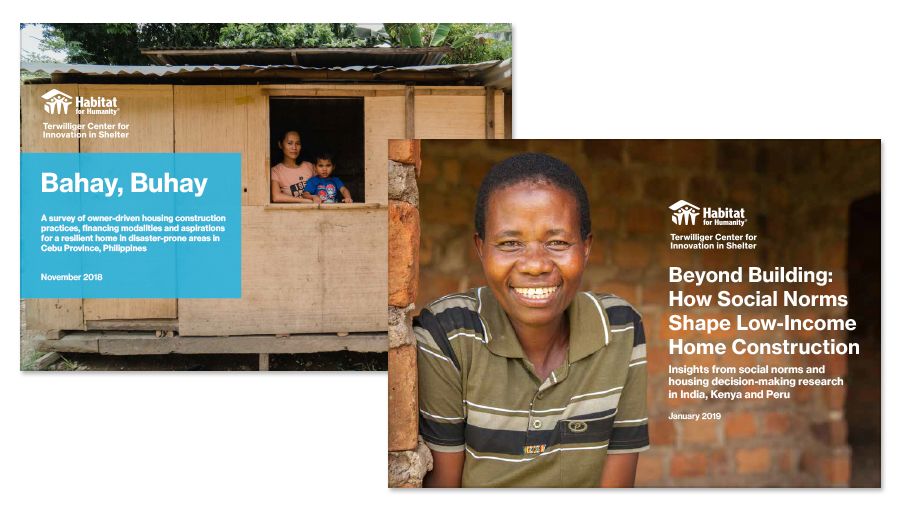
Both reports are available to download and read online.
Orienting construction businesses toward the low-income market
We held a roundtable meeting with Alternative Sand India and the Indian Concrete Institute to find ways to better produce, distribute and market low-cost, eco-friendly manufactured sand.
We also partnered with Elementia, a cement-based company in Mexico developing app-friendly instructional videos for masons.
Nurturing an innovative ecosystem for shelter
We expanded the first ever shelter-specific accelerator from Mexico into India and Kenya. The ShelterTech accelerators provide help for early-stage companies with business advice and mentoring to find solutions for affordable housing.
For example, in India, two start-ups, QuikSpec and Tvasta, respectively develop construction management software and use 3D concrete printers to rapidly create building blocks. Both companies were invited to make pitches to India’s prime minister this year.
Influencing financing for affordable housing
Our MicroBuild Fund, a capital fund for housing microfinance crossed new thresholds, distributing $127.4 million to 54 institutions across 31 countries.
In addition, we finished a five-year project to equip six financial institutions to offer housing finance products. A quasi-experimental impact evaluation of the project found that access to these small loans improved housing quality, satisfaction, health and perceptions of financial well-being.
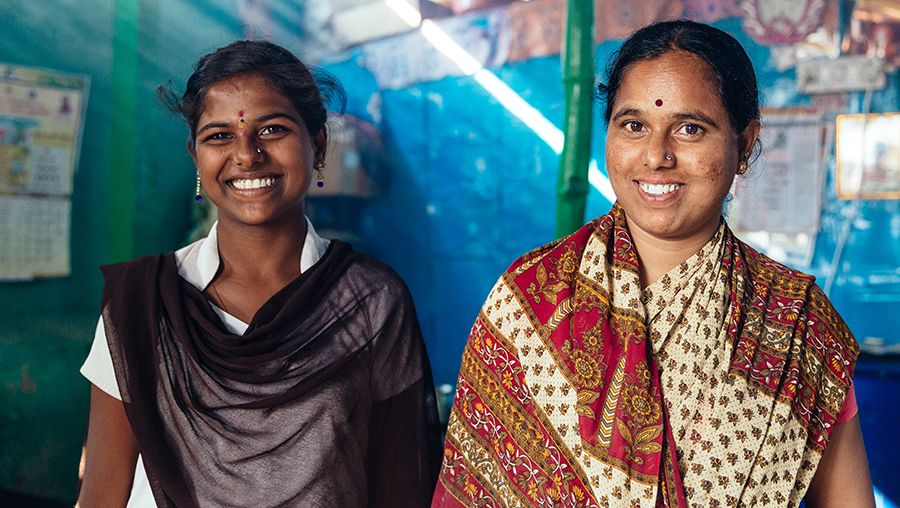
Creating access to small loans helps families like this mother and daughter in Karnataka, India, achieve financial stability.
Expanding global thought leadership
The center hosted events that provided networking, messaging and learning opportunities. One of these events, Build Better Before, was co-hosted by the World Bank’s Global Fund for Disaster Reduction and Recovery in Washington, D.C. Attendees from various leading institutions heard about the qualitative housing gap and resilient housing in the face of natural disasters. The work of the Terwilliger Center was also featured in such publications and online platforms as The Economist, Forbes and Devex.
The center consolidates more than a decade of experience in developing market-based solutions for housing and the body of work resulting from these early efforts, formerly referred to as the Center for Innovation in Shelter and Finance.
Habitat is grateful for the leadership and generosity of J. Ronald Terwilliger, retired chief executive officer of Trammell Crow Residential and current ex officio member of Habitat for Humanity International’s board of directors, along with other major donors such as Dow, Hilti Foundation, the Mastercard Foundation and the IKEA Foundation, who are making a global difference in the housing sector.

Both reports are available to download and read online.
Both reports are available to download and read online.

Creating access to small loans helps families like this mother and daughter in Karnataka, India, achieve financial stability.
Creating access to small loans helps families like this mother and daughter in Karnataka, India, achieve financial stability.
Listen
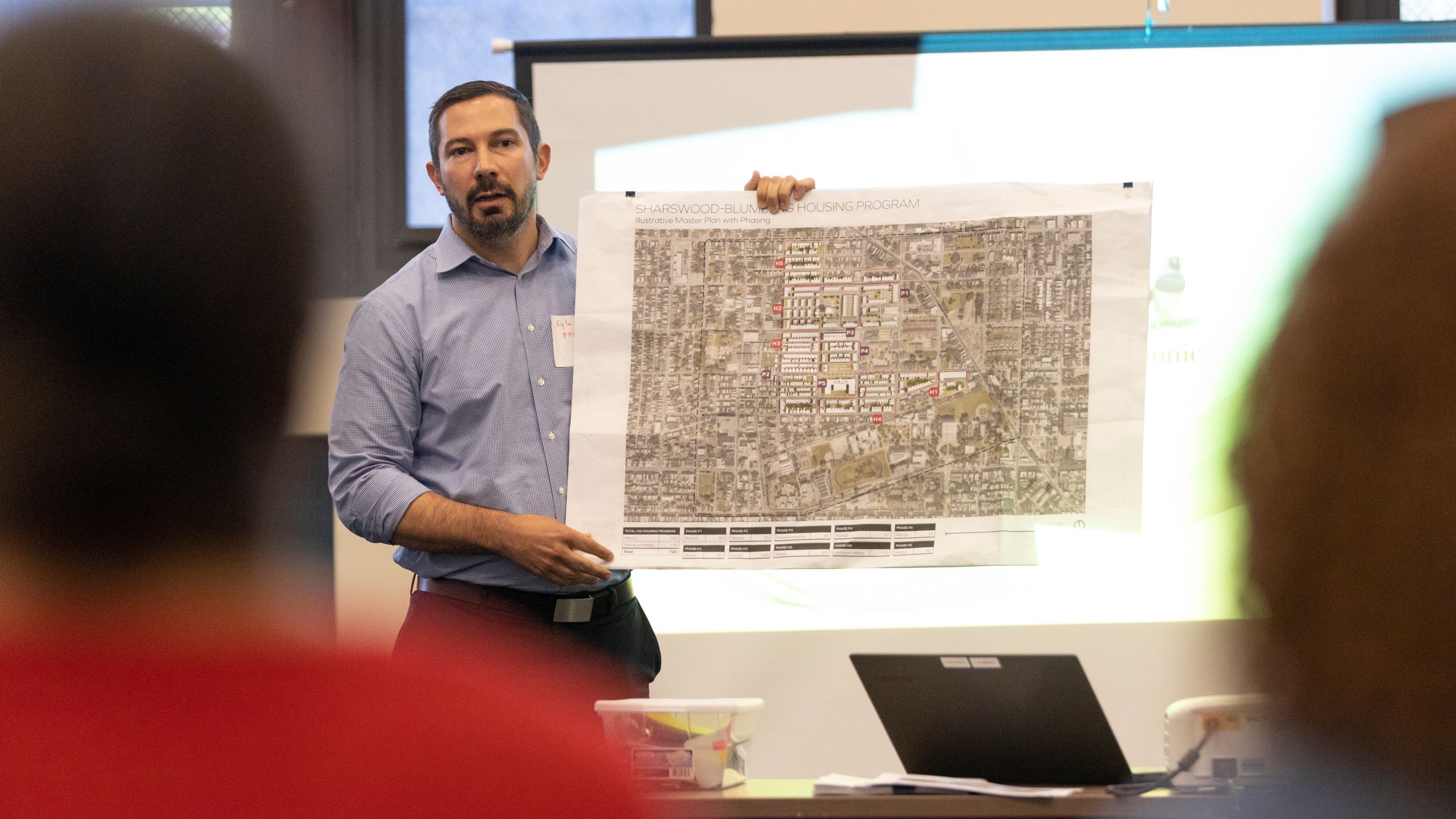
Members of the Brewerytown/Sharswood Neighborhood Advisory Committee regularly convene to discuss plans and priorities.
Members of the Brewerytown/Sharswood Neighborhood Advisory Committee regularly convene to discuss plans and priorities.
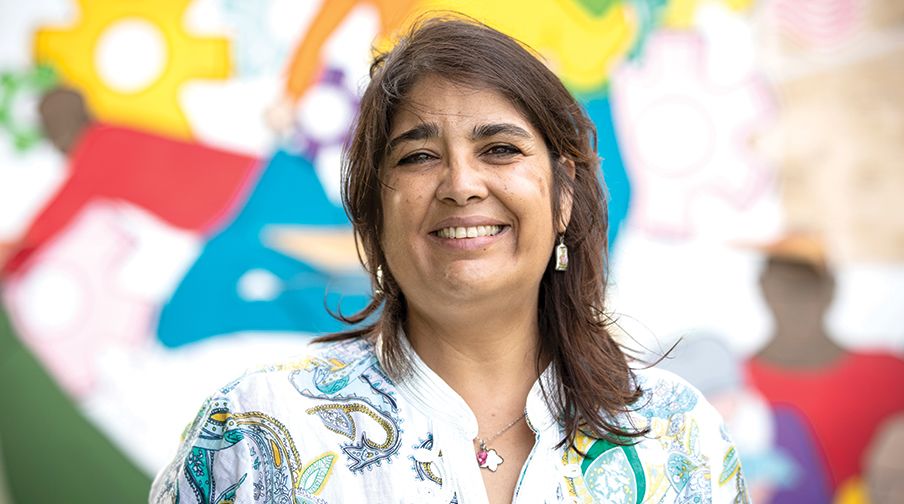
From Muncie to Moncks Corner from Long Beach to Louisiana, community residents like Jacqueline Hanoman are coming together to create positive change.
From Muncie to Moncks Corner from Long Beach to Louisiana, community residents like Jacqueline Hanoman are coming together to create positive change.
In 10 communities across the United States, Habitat for Humanity is working with national and local partners to help residents harness their collective power and develop the tools they need to bring lasting change to their neighborhoods.

Members of the Brewerytown/Sharswood Neighborhood Advisory Committee regularly convene to discuss plans and priorities.
Using the Quality of Life Framework — an innovative approach that begins with understanding residents’ dreams and concerns for their neighborhoods — coalitions of residents, businesses, churches, schools and other stakeholders are implementing solutions as unique as the neighborhoods themselves. Building and repairing homes, developing public parks, organizing safety meetings with local police, attracting new businesses, implementing property tax limits, helping older residents age in place.
In Philadelphia’s Sharswood neighborhood, the revitalization work centers around increasing decent and affordable housing, improving health and healthy food options, reducing crime, and boosting employment opportunities. “We have been working with partners to address this reality of the need for a new environment,” says Tommy Joshua Caison, a third-generation Sharswood resident and executive director of North Philly Peace Park, which offers programs for every age group.
Hear from residents of the Sharswood community about the impact of their engagement with Habitat and other partners.
Along with Sharswood, other participating neighborhoods are: 8twelve in Muncie, Indiana; Amphi in Tucson, Arizona; The Glens in Dacono, Colorado; Larimer in Pittsburgh, Pennsylvania; McComb-Veazey in Lafayette, Louisiana; Southwood in Charlottesville, Virginia; Wall Street in Moncks Corner, South Carolina; Washington in Long Beach, California; and Westside in Pittsfield, Massachusetts.

From Muncie to Moncks Corner from Long Beach to Louisiana, community residents like Jacqueline Hanoman are coming together to create positive change.
The Robert Wood Johnson Foundation — along with Lowe’s, Wells Fargo Foundation and General Motors — are financial supporters of the neighborhood revitalization initiative, which will take place over five years. Local partners are also investing in this work in each community.
As resident voices are being heard in each of these cities, strides are being made. Mixed-income developments have been planned, community gardens planted, crosswalks painted, vacant lots purchased. Block by block, like a chain reaction, each change small and large is leading to neighborhoods that are better poised to serve those who call them home.
“Any community problem — be it a shortage of housing that’s affordable, a lack of reliable public transportation or too few high-quality schools — affects us all,” says Don Schwarz, Robert Wood Johnson Foundation’s senior vice president of program. “Healthy communities are places that foster good health and the basic conditions to thrive are available to everyone.”
Speak up
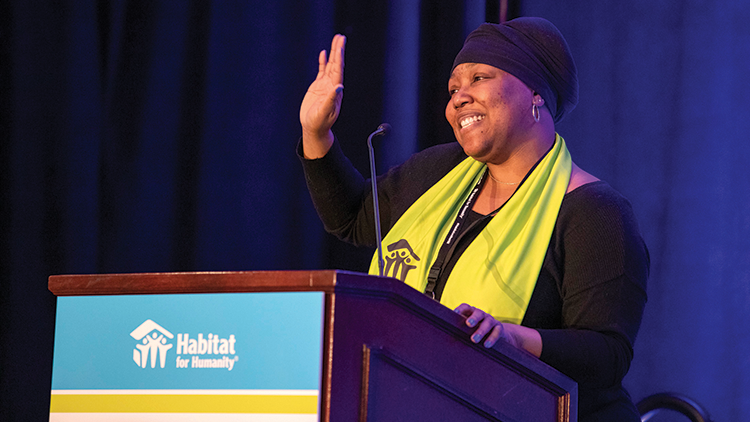
Families across the United States pay too high a price to cover the cost of their home, with more than 18 million American households using half or more of their income for housing. This year, Habitat for Humanity launched Cost of Home, a five-year U.S. advocacy campaign to mobilize local Habitat organizations, partners, volunteers and community members to find solutions and help create policies that will help 10 million individuals meet their most basic needs.
So far, Cost of Home has helped improve home affordability for 1.1 million people. The campaign is buoyed by 257 local Habitat and state support organizations in 40 states working for policy solutions. Their voices are amplified by those of residents and other community partners and are being heard in critical areas. Funding for the campaign has been provided by Wells Fargo, J. Ronald Terwilliger, Whirlpool, Bank of America and The Kresge Foundation.
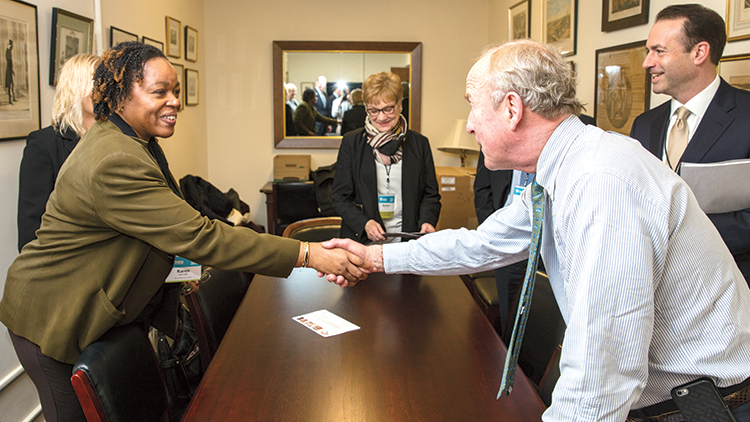
The Cost of Home campaign aims to improve housing affordability by influencing policies and systems that will improve and promote:
Housing supply and preservation
Communities across the U.S. face shortages of safe, decent housing where residents can afford to live and raise families. That’s why we’re helping to increase the supply and preservations of affordable homes. In Columbus, Ohio, voters approved the city’s first-ever bond fund dedicated to affordable housing. Almost half of a $1.03 billion infrastructure package is dedicated to affordable housing and expected to impact some 879,000 residents. Habitat MidOhio was actively involved in promoting the bond measure.
Access to credit
Credit is difficult, if not impossible, for many households to access, and minority and lower-income applicants often don’t have access to credit at all or have access only to predatory credit. We’re helping to create policies that increase and broaden access to safe credit for underserved populations. Habitat Indiana — along with a coalition of local Habitat organizations and over 100 churches, veterans’ groups and nonprofits — engaged supporters and lawmakers to help defeat proposed legislation to expand high-interest payday loans.
Land use
In certain communities, zoning restrictions and high land prices can make it prohibitively difficult to build or preserve affordable homes. We’re advocating for policies related to land acquisition, use and development that bring down the cost of building, promote fair housing and fully reflect community needs. In Austin, Texas, a coalition of affordable housing and community development organizations, including Austin Habitat, successfully pushed for a proposal designed to increase the city’s affordable housing stock through zoning changes and the elimination of some development requirements. The Austin City Council unanimously adopted the proposal known as Affordability Unlocked.
Communities of opportunity
“Home” includes the community and resources in which you live, work and grow. Habitat works to protect and strengthen neighborhoods by helping residents secure their rights and roles within their community. Habitat Metro Maryland successfully advocated for a law that allows tenants in Montgomery County to break their leases early and without penalty if their landlord does not fix imminent health and safety issues in a rental unit. The council, which represents Maryland’s most populous county, unanimously passed the legislation designed to put pressure on landlords violating housing codes.
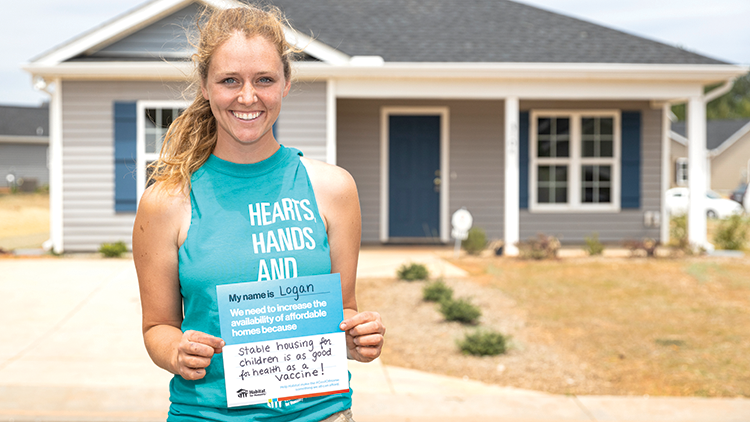
You can help raise awareness of housing affordability by making and sharing your own Cost of Home signs.



You can help raise awareness of housing affordability by making and sharing your own Cost of Home signs.
You can help raise awareness of housing affordability by making and sharing your own Cost of Home signs.
Mobilize
“Being able to deconstruct and not only keep items out of landfills, but to give them new life at the ReStore is so rewarding. Plus, the dollars our deconstruction crew brings in through these salvaged items have tangible results on Milwaukee families. There’s nothing quite like it.”
“Working together with future homeowners to help build their new homes is to experience grace.”
“The joy of being around like-minded people that just want to make a difference. It really is God’s love in action.”
“As a change agent, I speak for the people. Through me, a lot of people have their land rights protected. Volunteering with Habitat is my passion. If I don’t help people, I feel like I’m not doing anything.”
“I kept hearing people complain about things going on in the world, but talk alone doesn’t get anything done. Habitat AmeriCorps became a way for me to walk the walk.”
“At the end of one day of building walls, this young girl asked if we could go faster. She did not care if the walls were straight of plumb, just get them done so she can have a bedroom. This feeling of reward happens on every build, everywhere in the world.”
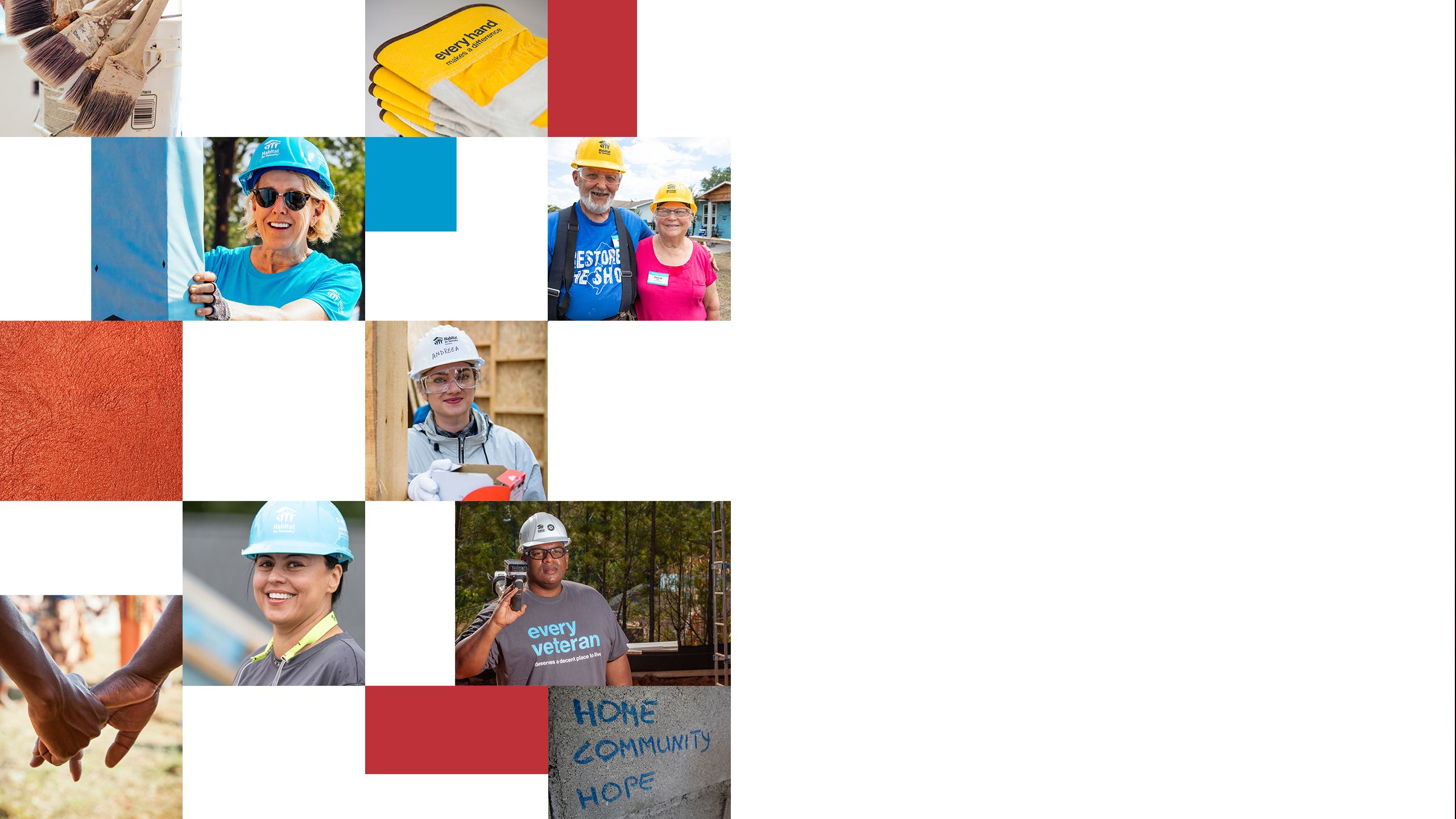
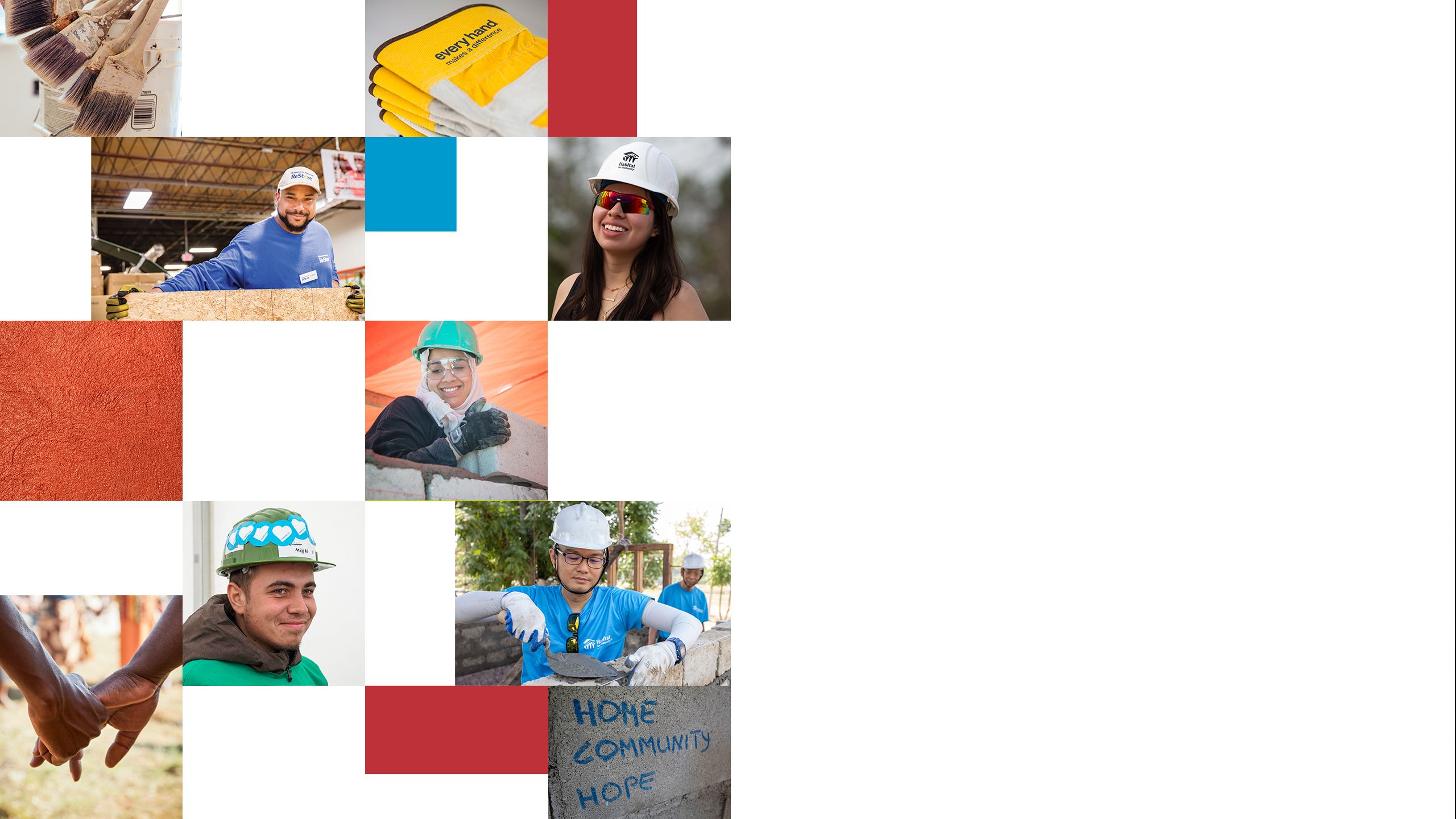
join us.
Your support means even more families will be able to experience the strength, stability and independence of a decent and affordable place to live.
Donate, volunteer, speak up or explore more ways to help.
